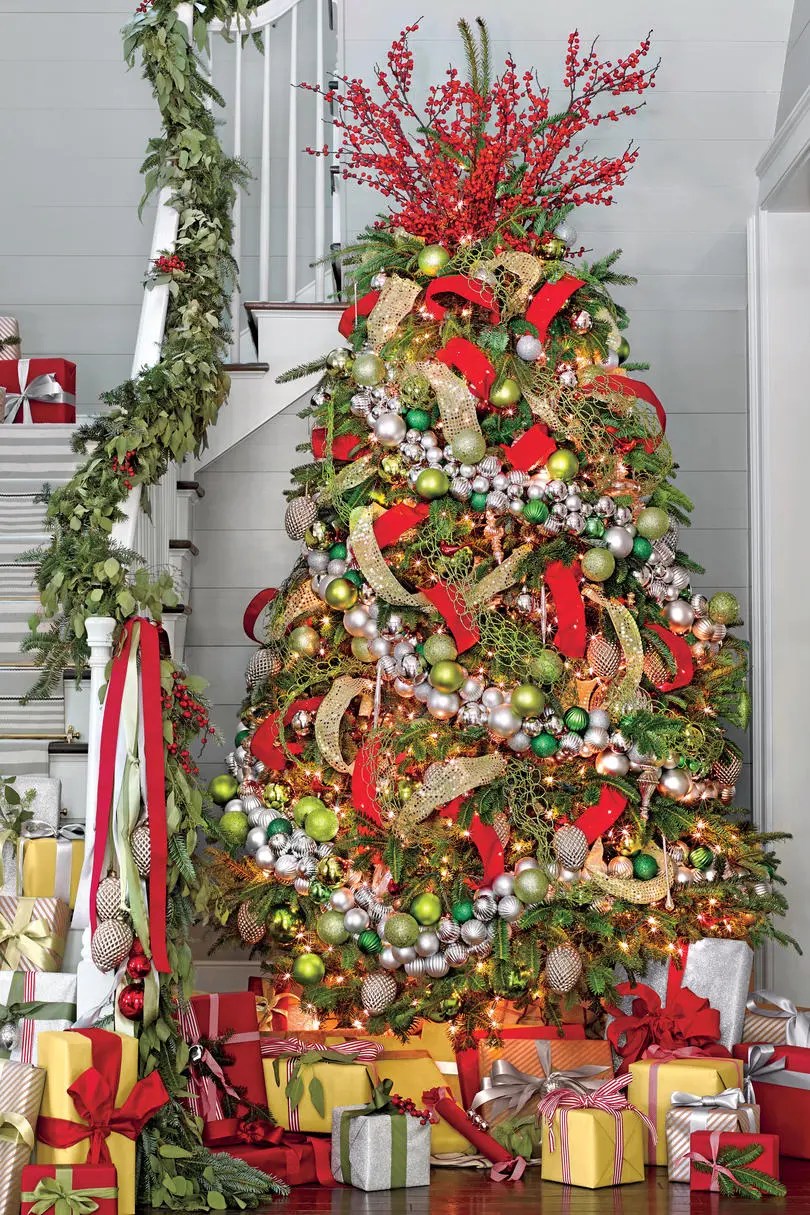Why Do We Decorate a Tree at Christmas?

Every year as winter rolls around, a familiar sight graces living rooms across the globe: the Christmas tree. With its twinkling lights and glittering ornaments, this evergreen symbol is at the heart of holiday celebrations. But have you ever paused to ponder, why do we decorate a tree at Christmas? Let's delve into the rich tapestry of traditions, myths, and history that make this ritual so enchanting.
The History of Christmas Trees

The custom of decorating evergreen trees dates back centuries and spans numerous cultures. Here are some pivotal moments in the timeline of Christmas tree tradition:
- Pre-Christian Traditions - Long before Christianity, ancient civilizations like the Romans, Egyptians, and Druids revered evergreens during the winter solstice, a period marking the longest night of the year.
- Medieval Times - During the Middle Ages, Europeans continued to embrace the evergreen as a sign of life and hope amidst winter's bleakness.
- 16th Century - Martin Luther, a pivotal figure in the Reformation, is often credited with bringing the Christmas tree indoors. He was inspired by the starry sky and sought to recreate it by placing candles on a fir tree.
- Victorian Era - Queen Victoria and Prince Albert popularized the tradition in England, with an illustration of their family around a decorated tree published in 1846. This act helped to spread the custom across the British Empire.
The Christmas tree's journey from outdoor celebration to indoor decoration represents a blend of pagan rituals with Christian festivities, creating a universal symbol of hope, light, and life during the darkest part of the year.
✨ Note: While the Christmas tree is a Christmas staple today, its origins highlight an extraordinary fusion of different cultural traditions.
The Evergreen Symbolism

The Christmas tree is more than just a decorative item; its evergreen nature holds deep symbolism:
- Life in Winter - Evergreens stand as a testament to life persisting through the harsh, cold winter, inspiring thoughts of perseverance and resilience.
- Hope and Renewal - The green foliage reminds us of spring's promise and the regeneration of life, making it a fitting symbol for a holiday that celebrates the birth of Jesus Christ.
These profound meanings have transformed the Christmas tree from a mere adornment into a central element of the holiday, serving as a beacon of light, hope, and continuity amidst the seasonal cycle.
The Art of Decoration

Decorating a Christmas tree has evolved into an art form, with each family and culture imparting their unique touch. Here’s a look at some common elements:
| Element | Significance |
|---|---|
| Ornaments | Originally simple, like apples and nuts, ornaments now range from intricate glass baubles to personalized keepsakes, each symbolizing memories or wishes. |
| Lights | Whether candles or electric lights, they symbolize the light of Christ and bring a touch of warmth to the darkest nights. |
| Garlands | Strands of greenery or tinsel, they echo the tree's evergreen theme, reinforcing the idea of eternal life and hope. |
| Tree Toppers | The star or angel at the tree's peak recalls the Star of Bethlehem and the angels announcing Christ's birth. |
| Presents | Placed beneath the tree, they signify the gifts brought by the Magi and the spirit of generosity during the holiday season. |

Every choice in tree decoration contributes to a story, making the tree a visual narration of holiday tales, personal and cultural.
🎄 Note: Your tree tells your story, so make it unique by incorporating meaningful decorations or family heirlooms.
Modern-Day Celebrations

Today, the Christmas tree transcends religious boundaries, becoming a universal symbol of holiday cheer. Here's how modern society has embraced this tradition:
- Community Trees - Public spaces light up with towering Christmas trees, drawing crowds to communal celebrations and fostering a sense of togetherness.
- Sustainability - With growing environmental concerns, there's a shift towards eco-friendly options like artificial trees, recycled ornaments, and sustainably sourced real trees.
- Charity - Trees and their decorations often serve as fundraising mechanisms for charities, symbolizing not just hope but also communal goodwill.
The Christmas tree remains an evolving symbol of festivity, adapting to reflect our values and societal shifts while maintaining its role as a beacon of joy and festivity.
Wrapping Up

Our journey through the tradition of decorating Christmas trees reveals much about human nature, our history, and the festive spirit we cherish. Whether through the symbolism of evergreens, the evolving art of decoration, or its contemporary community aspects, the Christmas tree stands as a testament to our enduring love for celebration, our hope for renewal, and the value of togetherness. This tree, adorned with lights and memories, lights up more than just our homes—it brightens our hearts, connects us to tradition, and fosters joy during the festive season. So, as you gather around your own tree this year, remember the deep roots of this beautiful tradition and how it continues to evolve, creating a living tapestry of culture, history, and hope.
Why do we use evergreens for Christmas trees?

+
Evergreens are used for Christmas trees because they remain green throughout the winter, symbolizing life, hope, and the promise of renewal when other plants have shed their leaves.
How has the Christmas tree evolved in decoration?

+
Originally adorned with simple items like apples and nuts, Christmas trees now feature an array of intricate glass ornaments, lights, garlands, and personalized items reflecting personal stories and traditions.
Are artificial trees environmentally friendly?

+
Artificial trees can be eco-friendly if they are used over several years, reducing the need for frequent replacements. Choosing sustainable materials and recycling or donating the tree at the end of its lifecycle also contribute to environmental conservation.
What is the significance of tree toppers?

+
Tree toppers like stars or angels symbolize the Star of Bethlehem or the heavenly annunciation of Christ’s birth, respectively, emphasizing the religious significance of the Christmas celebration.



